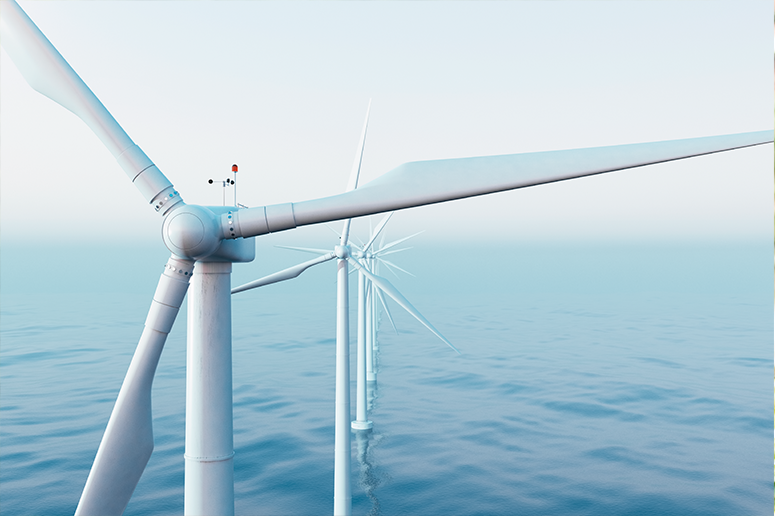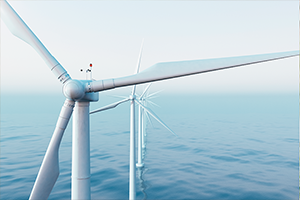Of Molecules and Metaphors
From doughnuts to e-cigarettes, Kenyon students use science to educate middle schoolers on addiction.
Read The StoryProfessor of Economics and Environmental Studies Rob Alexander considers the effects of a shift to a renewable energy infrastructure.

A question like this must first be placed within the context of why we need to shift to renewable energy sources. Unmitigated climate change poses an existential threat. Twenty-nine percent of all U.S. greenhouse emissions are produced from generating electricity — more than any other sector of the economy — with transportation close behind at 27 percent. So, addressing these emissions is critical to mitigating the worst impacts of climate change.
Slowing climate change matters not just for our climate but for our economy. Seminal research on the economics of climate change by U.K. economist Nicholas Stern estimates the potential impacts of climate change to include a long-term 20 percent reduction in world gross domestic product (GDP). In comparison, the Great Recession saw a GDP decline of around 4 percent for two years. With a 2015 world GDP of $74.15 trillion, the cost of not shifting to renewable energy is at least $15 trillion annually. To avoid these impacts, we must reduce our greenhouse gas emissions by 80 percent by 2050. This goal is realistic, but it is a major undertaking that requires deliberate action.
The question is not whether we should transition to renewable energy, but whether the transition we must undertake will provide a net economic benefit or cost. As it turns out, the transition to renewable energy is likely to result in a net economic gain for our society.
That does not mean that every individual will benefit, nor that the transition will be without pain, but it does mean that the transition is likely to result in net economic growth, more jobs and a more efficient and resilient system of electricity production.
A recent study by the Risky Business Project provides a framework for an approach that is both technically and economically feasible. It is based on three principle transitions: shift from fossil fuels to electricity, generate electricity from low- and zero-carbon sources and use all energy more efficiently.
The shift from fossil fuels to electricity includes the gradual adoption of electric vehicles, electric and geothermal heat pumps for heating, and electricity in industrial processes. The shift to renewable electricity requires a rapid transition to zero-carbon sources, like wind, solar, geothermal and nuclear, along with an expansion of energy storage and a redesigned grid. The potential for increased efficiency is significant. For example, we lose about one-half of all electricity generated in the U.S. to system losses. A redesigned distributed generation grid could dramatically reduce those losses.
The cost of the Risky Business Project plan would be around $320 billion a year from 2020 to 2050. This is a major investment, about 8 percent of the size of the 2015 U.S. federal government budget, but the returns over the life of the transition would be substantially larger and would continue indefinitely. The savings would start at around $65 billion a year in the 2020s, increasing to over $700 billion a year in the 2040s. Around 1 million additional jobs would be created during the 30-year transition, with many of the largest gains being in the domestic construction and utilities sectors. These returns do not include the damages saved from mitigating the worst impacts of climate change.
Until recently, the greatest impediment to the shift to renewable electricity was its cost relative to fossil-fuel-based plants, but that is no longer the case. According to the U.S. Energy Information Administration, the levelized cost of electricity from solar is now fully competitive with coal, without subsidies, and the levelized cost of electricity from wind is potentially even lower than that of natural gas generation. A levelized cost allows for the comparison of different types of electricity sources by considering both the total lifetime cost of building and operating a plant and the total lifetime energy produced by the plant. It is the minimum price that would have to be charged for a plant to break even.
One of the historical concerns with solar and wind systems is their intermittent nature, while fossil fuel plants operate 24 hours a day, but even that is no longer an issue in the transition to renewable energy sources. A recent analysis by the investment bank Lazard compared the unsubsidized cost of commercial solar and wind systems with energy storage systems to that of conventional fossil fuel generation systems. The analysis found that, even with storage, commercial renewable energy systems are cheaper than coal and comparable to natural gas.
Even if climate change were not such an urgent issue, the shift to renewable energy would make sense on purely economic grounds alone. Given the need to avoid the most significant impacts of climate change, the case isn’t even close. A shift to a renewable energy infrastructure is a win-win for our society.
From doughnuts to e-cigarettes, Kenyon students use science to educate middle schoolers on addiction.
Read The StoryKenyon alumni from different disciplines explain how long-term stress takes a toll on our health — and how we…
Read The StoryHow Margaret Willison '07 turned her love of pop culture into a mini media empire.
Read The Story










